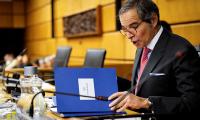ISLAMABAD: A report by TABADLAB has shown that Pakistan requires a $6 billion investment to provide Optic Fiber connectivity of the internet.
According to a working paper titled “The Fixed Broadband Challenge: Building the runway for Pakistan’s Economic Take-Off” prepared by TABADLAB, countries like Malaysia, Bangladesh and Vietnam have done well to expand their infrastructure and services. Their examples can provide Pakistani leaders with key insights on how important the role of fibre expansion can be for the digital transformation of countries.
According to estimates, an investment to the tune of at least $6 billion is required to capture the potential target pool of 10 million house passes, a massive undertaking that is beyond the current capacity and intent of existing service providers. These considerations are now being evaluated by Ministry of IT and Telecom in light of industry feedback regarding the National Broadband Policy 2021, with the view towards re-drafting the policy to make it more responsive to market needs.
Over the past five years, internet penetration in Pakistan more than doubled, from 22% in 2016 to 54% in 20211, and the country currently has over 100 million broadband subscribers relying primarily on mobile broadband to access the Internet.
Given that Pakistan’s current fixed line penetration is just over 1%, there is evidence to suggest that the country faces a significant opportunity to harness its demographic. Understanding the Connectivity Conundrum dividend through focused and impactful decision-making around digital connectivity. To be clear, this opportunity has existed, at one level or another, since the turn of the century. But translating it into sustainable advantage requires a critical examination of the obstacles to making fixed broadband more pervasive: clear vision, decisive policy actions and swift implementation can help Pakistan make up that lost ground.
Today, broadband connections deliver speeds in excess of several megabits per second (Mbps). There are two overarching categories of fixed broadband: wireless and wired. Wireless includes mobile radio, fixed radio and satellite technologies, while wired broadband can be further classified into Digital subscriber Line, Cable modems and Fibre-to-the-x (FTTx). The Fibre-to-the-x (FTTx) uses fibre optic technology to convert data, transmitted through electric signals, into light through transparent, ultra-thin glass fibres. Its speeds surpass those of DSL or cable technologies by tens or hundreds of Mbps.
In recent years, fibre optic infrastructure has been prioritised as the preferred technology for fixed broadband due to its higher speed and lower probabilities for electromagnetic interference.
Pakistan’s challenges, such as a rural-urban divide, a dependence on connectivity via mobile broadband, high taxes and a low demand for high-speed broadband have all been overcome by other countries in the past. Despite having one of the lowest price points for mobile broadband in the world (USD 0.48 per 1.5 GB of data), Pakistan suffers from lower mobile and total broadband penetration when compared with other comparable countries.
Fixed broadband adoption is low amongst all members of Pakistan’s peer group: at less than 5% penetration, and an average of almost 2% penetration. Regardless, certain countries have, over the past decade, been taking steps to expand their infrastructure. Whereas only 9% of mobile towers in Pakistan are connected to fibre.
The only logical way forward is to build on the progress made thus far to enrich Pakistan’s broadband suite by strengthening its fibre optic backbone. At a cost of approximately USD 300 billion, a 10% increase in fixed broadband penetration can generate around USD 4-5 billion at a meagre 1.38% impact. While Pakistan struggles with an extended ‘draft’ stage of the broadband policy, the lagging landscape requires urgent and high priority action to resolve process related challenges and drive focus on delivering outcomes. Experience from countries that are decades ahead of us should provide insights to fast-track progress domestically, the report concludes.







